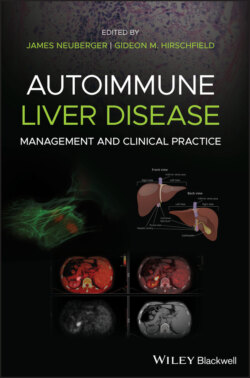Читать книгу Autoimmune Liver Disease - Группа авторов - Страница 69
Mechanisms of Loss of Tolerance to Autoantigens Bacterial and Viral Infections
ОглавлениеBacterial, fungal or viral infections can instigate innate and adaptive immune responses that result in autoimmunity [21]. Migration of neutrophils to sites of infection or sterile inflammation mediated by IL‐8, IFN‐γ, C3a, C5a, and leukotriene B4 plays a key role. Neutrophil phagocytosis of microbial organisms and particles leads to release of soluble antimicrobials and formation of neutrophil extracellular traps (NETs) comprising chromatin and proteases that enmesh and kill microbes. The proteolytic function of NETs also can generate neoantigens or microbial peptide molecular mimics of autoantigens (see next section).
Superantigens are proteins produced by pathogenic bacteria and viruses that trigger non‐antigen‐specific polyclonal T‐cell activation of up to 20% of the host's T cells. These activated T cells create a cytokine storm of secreted cytokines, especially IFN‐γ, which activates macrophages to secrete proinflammatory IL‐1β, IL‐6 and TNF‐α. This proinflammatory environment could promote adaptive immune responses to autoantigens in dead or dying cells.
